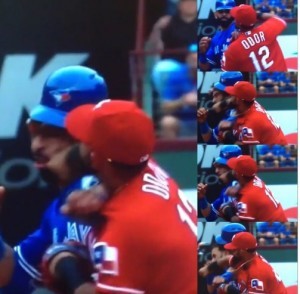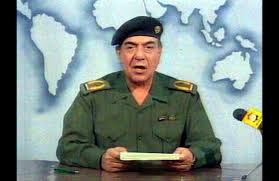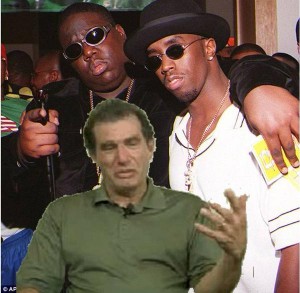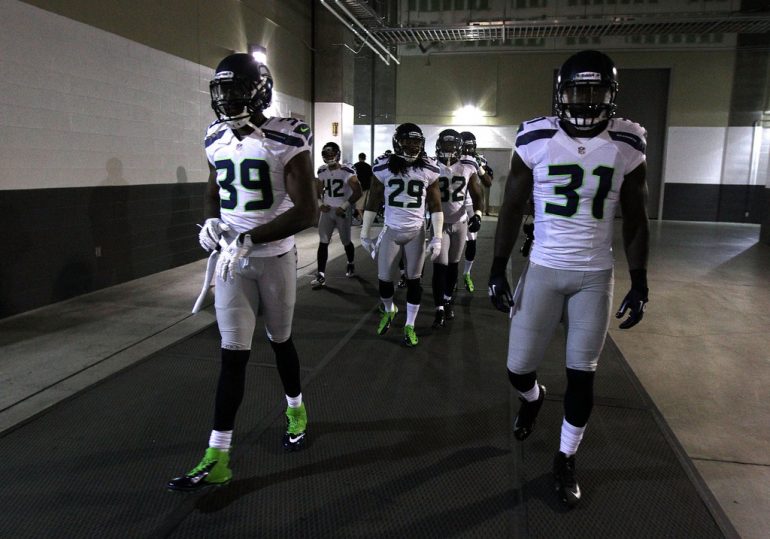Browner’s Return & Big Dime vs All Time
The general response on social media regarding the return of some familiar Seahawks faces recently was, “Hey man! We’re getting the band back together!” So what could be more fitting than to view this through the lens of some weepy, contemporary nostalgia of soft-rock Gawd, Dave Matthews!? I’ll give you a second to dance in the aisles and bro-five before we begin.

Wow! That’s like chicken soup for the soul, right? And who knew Dave was a #12? Color me impressed. But Dave is not just your typical #12 on-the-street, no. He’s an omnipotent songwriter and Oracle of future Seahawks roster moves as well. Seriously, he not only predicted the return of Brandon Browner, but also that he he’d be used at Linebacker instead of Corner! As proof, I offer you Exhibit A. These are the opening lyrics from his smash hit, The Space Between.
“You cannot quit me so quickly
There’s no hope in you for me
No corner you could squeeze me
But I got all the time for you”
Boo-YA! Nailed it right on the head. Succinctly distilling Browner’s soulful retort to general fan reaction, and to the inevitability of his Seahawk return, Matthews is once again deftly on-point with his softcore hot-takes. He’s like, “Oh, pardon me kind Sir, but….. POW!”

Let’s face it, Dave Matthews is winning at life and we’re all just sitting around hating on him like meta-Skip Bayless. I’m ashamed of myself, so in an effort to make amends, let’s take a hardcore, nuts-and-bolts approach to this “New Look” Seahawks defensive backfield, and figure out just WTH is actually going on here. Oh, and welcome back BB! He was, and IS, a founding member of the LOB. Your credit will always be good in this town, Mr Browner. I don’t even care that you seriously mugged Jermaine Kearse on that fateful Super Bowl INT, preventing him from screening off Manning, who subsequently destroyed our hopes of back-to-back titles. I would never hold that against you. Never. And I didn’t root against you in New Orleans either, and I have no idea who this man below is. I never paid him anything or wished ill on you at all…

The Past – Big Nickel and the GOAT
The past several years have been kind to the Seahawks. The Pete Carroll era has been defined by the stifling defensive pressure of the Wide-9 alignment. This bend-don’t-break philosophy is predicated on stopping the run, while challenging QBs to throw the ball downfield into mismatches of physically superior defensive backs. Earl is fast, Richard is long, Kam is punishing. These cornerstones have been complimented well by Browner, Thurmond, Maxwell, Lane & Shead, but they have all clearly been the ‘Robin’ to Sherman’s ‘Batman’. They have been capable role players and products of the market inefficiency at DB in the first decade of the 2000’s. These players were had for next-to-nothing late in the draft and through free agency. Leveraging this size and speed to maintain a competitive advantage over smaller opponents required the Seahawks to make a traditional passing-down sub-package their base look. This “Big Nickel” allowed them to adjust to a passing league while walking their huge corners and safeties up to roam the Line of Scrimmage versus the run as well. Their length and physical dominance led to one of the Greatest Of All Time units, building on rare defensive line depth, to provide the franchise’s first Super Bowl victory, and 3rd trip to the Championship game in under 10 years. They even received the flattery of an all-time great nickname, the Legion of Boom! This was the stuff of legend. But times change. The price of long CBs has tripled in draft capital, a premium is paid for ex-Seahawks in free agency, and opposing Coordinators are tirelessly working to crack the Pete Carroll code.
The Present – Brother, Can You Spare a Big Dime?
While maintaining an almost unprecedented run of years atop league rankings for Total Defense & Scoring Defense, it’s impossible to miss that the Seahawks are now somewhat diminished. The proof was in the pudding of 4th quarters in 2015 that saw this unit surrender big game after big game to teams they had recently dominated in those halcyon days of the LOB. But how, and WHY?
The atmosphere following the Super Bowl XLIX loss to the Patriots was complex. There were hurt feelings in the locker room, guys complaining of being underpaid and under-appreciated. Some were more vocal that others. There was also the continued departure of free agents and some new faces struggling to fit in. But these were simply window dressing and convenient scapegoats, *COUGH* CaryWilliams *COUGH*, for what was going on between the whistles, within these games themselves. On the surface, this was a core group of veteran guys doing the same things they had always done. It was fair to expect similar results. But no team, not even the greatest teams, exist in a vacuum. In 2015, the league changed what it did when playing the Seahawks, and the GOAT bubble was burst. Let’s take a dive into the numbers and learn what they can tell us about the epic change in philosophy from Pete Carroll’s hallmark nickel sub-package, to something new, and even potentially more exciting! The Big Dime.
Wait! What? Yes, Pete has publicly announced they will be switching their defensive calls in 2016 to include more match-up-based Dime packages (6 defensive backs) w/ Cover-2 elements. This is a major departure from what made them so reliably efficient for years, as they stubbornly sat in Cover-3, a vanilla alignment in which everyone knew their role and executed flawlessly in their portion of the field. The goal was to stay tight, interrupt routes at the LoS and not get beat deep by the big play. We all recall highlights of Richard Sherman famously yawning and taunting opponents as they simply suffocated routes and ran QBs into the ground. It was simple, effective, boring, epic defense being played by some of the greatest talents in the modern era. So why would a zebra ever change his stripes? This news was received by fans and local media with almost a passing fancy, like “Oh. That sounds neat. Cool.” COOL? This is like Chuck Knox turning-up in 1985 after he had won Coach of The Year the previous season with Curt Warner at tailback, and declaring that he was going full spread offense! Neat? Get the freakin’ defibrillator out and hook-up the Seahawks beat writers, because this is major news and it demands more than a by-line in a weekly presser recap, wedged between Doug Baldwin faking a mellow personae and pictures of Germain Ifedi’s butt! Holy cow, what in the world could have happened that would force Carroll to now throw away the defensive playbook that launched a dynasty and created multiple head-coaching opportunities for its’ disciples in this league!? Welp. Here’s what…
In a thorough review of the defensive play splits provided by ProFootballReference.com, 2015 saw the rise of teams boldly challenging the Cover-3 shell, particular in non-traditional situations, most clearly demonstrated by the statistical analysis of 1st Down & Ten Yards To Go. 1st&10 has long been the down considered to be the running down. The thought there is that you take a modest, low-risk gain on that 1st attempt to set-up more advantageous downs and distances to come. And historically, the success rates of teams converting on subsequent downs following a successful gain on 1st bares that out. But what if your opponent is the Seattle Seahawks of the early 2010’s? This is a group that is just waiting to raw-dog you on 1st if you run into the teeth of that DL, and you will almost certainly be then left to throw into the waiting arms of the LOB on 2nd or 3rd and long. That is essentially not having a prayer. That is how the Seahawks led the league 4 years in a row on Defense. But in 2015 that began to change, and I’m suggesting that change came most dramatically as teams, left with basically no other choice, began to throw at the Seattle 1st down alignments, and with great effect.
In the 3 years prior to 2015, opponents ran more often than not on 1st down, as you would expect, and opponent passer rating on these attempts averaged approximately 70. That’s a Colin Kaepernick-like passing efficiency. But in the 2015 season, Seahawks opponents, for the first time, actually threw the ball more versus our Defense than they did attempt to run the ball, on the most ball-runny-est down in the game! And how did the league, as a whole, fair versus our Cover-3 on 1st & 10? Opponent passers averaged 7.2 Yards Per Attempt (Not per completion, per attempt!), and a 95 Passer Rating! For comparison of just how dire the situation had become for Pete’s vaunted scheme, here are Tom Brady’s offensive splits over the same time period; Brady, 7.1 yards per attempt, 89 passer rating on 1st & 10. Sweet Mother of Pearl, the league average versus the Seahawks on 1st down was significantly BETTER, than actually having to face Tom Brady himself! Though many could likely identify the trend started with Tommy Boy in the final quarter of SBXLIX. Hold on. It gets worse. A lot worse…
Tight End Problem? What Tight End Problem?
Only occasionally in human history does the absurdity of a public relations pitch reach the balmy heights of a Pete Carroll suggesting there was nothing to see when questioned about the failures of his scheme to cover TE’s effectively in 2015. His head firmly in the sand, he doubled-down and wholeheartedly gave his players a ringing endorsement for their on-field efforts in those fateful 4th quarters. Cautioning fans and media to trust as they maintained the status quo and sought to simply get back to “finishing”. Again, the axiom there being, stay the course, continuing to do what you’ve always done and expect the same results. As losses mounted, and the Division with a home playoff game it’s reward, quickly became a pipe dream, he was recalcitrant. ‘All is well. Nothing to see here. We expect final victory any day now.’ For fuck’s sake, even THIS guy was embarrassed for him…

Even from the couch, #12s knew it was bad and not getting better fast. Week-in, week-out it was the same story. It appeared to be most prevalent near the ends of games, but was, in-fact, happening continuously throughout games as the tap was left running wide open in the form of TEs challenging the middle of the defense early in possessions. Here’s the splits vs TE’s on 1st down & 10; 31 completions of 37 attempted passes. A success rate of 84% with only a single pass defended in that group. Among the Top 10 receiving TE’s faced in 2015, they had a 97% success rate throwing vs Seahawks on 1st down. It would have been 100% had Martellus Bennett not dropped the one pass that came his way, as well as the aforementioned pass break-up by KJ versus Greg Olsen, who went on to stick a dagger in the heart of the Seahawks later that day. Teams were, at times, moving through the Seahawks defense at-will. The best TE’s in the game were suddenly making Bobby & KJ look slow, Kam look old and confused. While not as efficient, but ultimately even more effective in moving the chains, was passes to receivers as a whole on 1st, totaling a 70% completion rate and accounting for almost half the total yardage surrender by the Hawks in 2015, across all downs and distances! To be sure, the book is out on the Cover-3. It’s pages lay burning and dispersed like charred confetti across the field turf in Glendale, Arizona since February 1st, 2015.
By mid-season, some changes were necessary and some serious scapegoating was in order. Cary Williams was demoted then sent packing in what the PFR numbers show may not have been the fairest treatment of Williams considering the actual game splits. In a review of the totals, KJ & Bobby were getting burnt at nearly a 2:1 ratio vs Williams, though Williams, as the lucky man opposite Richard Sherman ensuring he gets picked-on continually, was targeted at a much higher rate overall than either of our ProBowl LBs. Kam was almost as awful, coming in at #3 most roasted per attempt. But hey, you’re not going to cut those guys, are you? Buh bye Cary Williams!
The 1st down passing defense was a sieve all year long. The only surprising thing is that the unit rebounded to once again lead the NFC in total defense, despite this. That honestly shows you how atrocious the other defenses in the NFL are. To have an open door in your scheme and still out-perform your peers is virtually amazing. All credit to the 2nd and 3rd down performances yet again from these prideful vets, that constantly played with their backs to the wall in 2015. The average down and distance versus the Seahawks following an attempted pass on 1st & 10 was 2nd & 3! And you STILL led the league in total D? That is called royally nutting-up. Go Hawks! Oh, and John Schneider, give Michael Bennett his damn money, please???

Once More Unto The Breach, Dear Friends
So where does this all leave us? Well, there’s no path forward other than into the brave new future of scheme-change. You can’t rightfully call a philosophy that leads the league every year, “busted,” but you can certainly recognize the incredible burden it’s few failings are placing on your aging DL talent and secondary. With this in mind, we look next at exactly what a Dime defense is and why it stands to help the Seahawks armor it’s Achilles Heel going forward.
Here’s what we know. Teams are lining up their best receivers in the slot and at tight end, isolating our LB’s on 1st down. They are carving them up at will (no pun intended). Trust me, you don’t even want to know what Larry Fitzgerald did against the Seahawks out of the slot last year. It’s honestly embarrassing. My Blue Pride is on full-repression mode right now. So what’s the fix? First, Pete Carroll simply recognizing its time for his best cover-man to travel is a fundamental paradigm shift not only for the Seahawks, but for him as a coach of almost 40 years. This can’t be understated. Moving Sherman around and shadowing, not the #1 WR as many top CBs in the league commonly do, but covering the most deadly receiving threats in general will likely be the Soup of the Day for #25. This will change with down and distance. This is how complex the competition has become in order to defeat the Seahawks. The Seahawks will now adapt. They no longer have the luxury of imposing their brand of football on others. Others are dictating the game to the Seahawks. They need to make it happen with creativity and communication on the field, not base packages and flawless execution. Richard Sherman is about to be thrown back into the middle of the action after some extended off-time on the proverbial isolation of Sherman Island. Think escaped T-Rex in Jurassic World! #25 will be back to wrecking lives as he reinserts himself into the playmaking food chain. 8 INTs are once again likely for this All Pro.
Next, the combined exit of Bruce Irvin and the return of Brandon Browner provide a unique opportunity to insert another movable chess piece in the defense that is equally able to cover-up big slots (like Fitzgerald) as well as TE’s, while remaining committed to laying big lumber on running backs from a LB alignment. When you have a Browner-type player in the game in place of a traditional LB it’s called a Big Nickel. We saw that for years now with Kam Chancellor playing up close the LoS. When you have BB & Kam prowling the LoS, you have a Dime package, as Lane and potentially Shead join-in with Sherm & Earl, in place of either the SAM, KJ Wright (most likely) or even one of the DTs, switching from a 4 DL look to a 3 DL alignment. In any event, you likely have help for Bobby up the middle and Earl roams as a single-high safety, reading and reacting rather than shading and providing back-up for lesser cover guys. Anyone that remembers the old Buddy Ryan 46 defenses of the 80s & early 90s can tell you that if they pull this off, it will be a return to some old school ass-whooping, ’85 Bears or ’91 Eagles-style. Ye-AH! It’s like that. Potentially… WHAT? (image courtesy of Larry Stone, a REAL Old School G!)

Throughout the ebb and flow of the game, #12s are likely to see any number of exotic alignment’s but here is one of the most intriguing.
#29
#54
#39 #31
#35 #56 #93 #72 #55 #20 #25
Ladies & gents, this is your Big Dime soul-crushing defensive front of the 2016 Seattle Seahawks. You could conceivably leverage this Big Dime 46 on any down & distance to equal effect, mixing your player alignments within it to capitalize on the best situational match-ups. You’re essentially big if you need to be big. You’re fast if you need to be fast. You can punish or be flexible and cover more effectively at every level. However, you will lose one critical element that led to past successes: The ability to keep the play in front of you when coverage breaks down. Gone is the safety net. If Earl is late or bites on a double move in deep center, you’re toast over the top. Hopefully before then, this group will have pounded the will to compete out of opposing receivers and QB’s, so as not to fall prey to the big play near the ends of halves. This new look Seahawks defense has the potential to maintain continuity with past great defenses in Seattle, while presently addressing the breakdowns caused by league-wide adjustments to their prior scheme, and even propel the them to new future heights, as yet undreamed of by fans and analysts. The home field at Century Link remains 120 yards long end-to-end, and 53 1/3 yards wide from sideline-to-sideline. Our hopes, and the destiny of this team beyond 2016, lay squarely in The Space Between.
